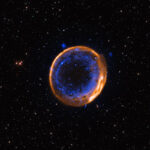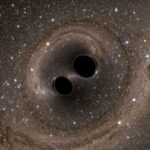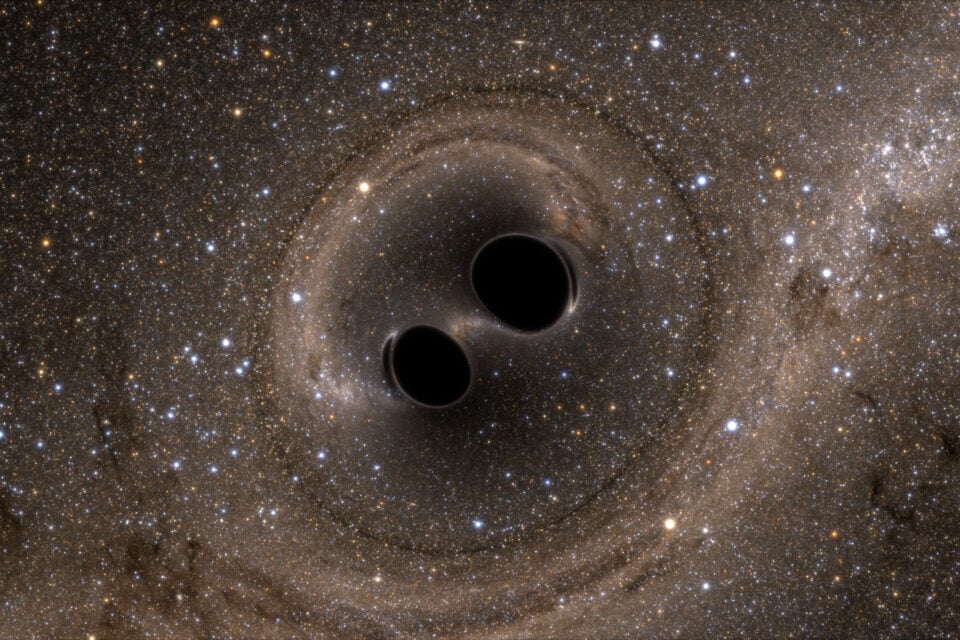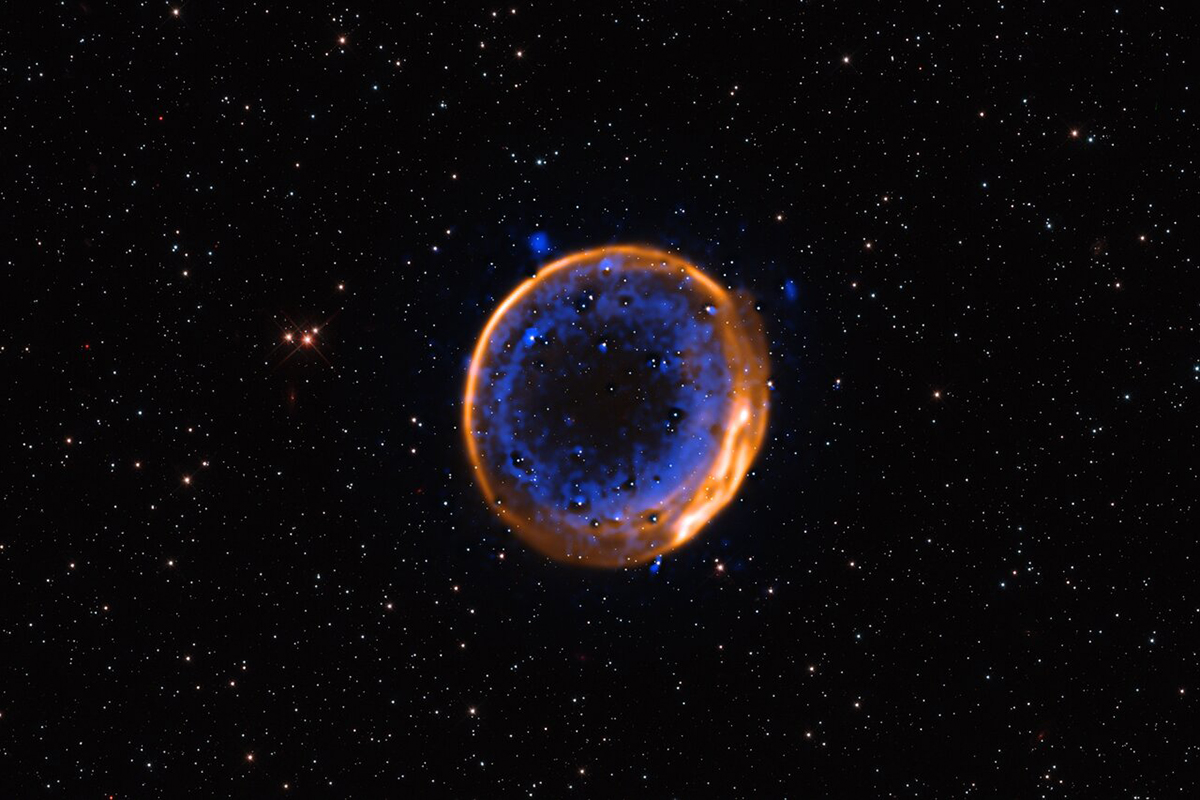In a cosmic event that’s turning astrophysics on its head, scientists have detected the most massive black hole merger ever observed—one so extreme it falls outside what current theories predict is even possible.
The event, named GW231123, was picked up by the global network of gravitational wave detectors—LIGO in the United States, Virgo in Italy, and KAGRA in Japan—on November 23, 2023. But as researchers dug into the data over the months that followed, they realized they were looking at something unprecedented: two black holes, 137 and 103 times the mass of our Sun, colliding to form a final remnant estimated at around 225 solar masses.
To put it plainly: this black hole shouldn’t exist.

The signal itself, a fleeting chirp lasting less than a second, was faint but unmistakable. It was the gravitational echo of two enormous objects spiraling together at half the speed of light before crashing in a cataclysmic event more energetic than anything humans have ever detected.
The LIGO–Virgo–KAGRA team used template matching algorithms to isolate the waveform, filtering it from the constant background “noise” of spacetime. What they found was a remarkably high-amplitude signal that originated from a distance of roughly 1.6 billion light-years away. And the mass calculations based on the waveform were, frankly, shocking.
Violating the Laws of Stellar Evolution?
Astrophysics 101 teaches us about something called the pair-instability mass gap. This is a range—typically between 65 and 130 solar masses—where black holes aren’t supposed to form through stellar collapse.
Why? Because stars that massive go through a process known as pair-instability supernova. At those scales, the star’s core becomes so hot that photons spontaneously convert into electron-positron pairs, softening the radiation pressure. The result? The star destabilizes, explodes, and leaves behind no remnant—no neutron star, no black hole, just dust.
So how did we end up with two black holes well into and beyond that forbidden mass range?
That’s the puzzle.
The Hierarchical Merger Hypothesis
One possible explanation gaining traction is that these weren’t “first-generation” black holes born from stars, but rather second- or third-generation black holes, formed by the previous mergers of smaller black holes. This kind of hierarchical merging is thought to happen in densely packed environments—such as globular clusters, nuclear star clusters, or even the turbulent disks of active galactic nuclei (AGN).
In these chaotic environments, black holes can sink to the center through dynamical friction, where they form tight binary pairs and repeatedly merge over time. Each time they do, the resulting black hole gets more massive—and we inch closer to breaking the rules.
But there’s a catch. Hierarchical mergers are expected to impart significant spin to the remnant black holes. If the spins become too high, they can eject future merger products out of the cluster entirely via gravitational recoil. That limits how many generations you can stack before the whole process becomes unsustainable.
So if GW231123 is the product of a second- or third-generation merger, it either formed in a particularly accommodating environment—or we’re missing something big.
Physics Under Pressure
Events like this are more than just cosmic fireworks. They give us rare opportunities to test the fundamentals of physics. The final black hole’s “ringdown” phase—the way it settles into a stable state—can be compared against predictions from general relativity. So far, Einstein’s theory is holding up, but the mass range of GW231123 is starting to stretch our models to the edge.
In fact, the amount of energy released during this event—about 15 solar masses converted directly into gravitational waves—makes this one of the most luminous events in the universe in terms of pure energy output. For a brief moment, this merger outshone every star in the observable universe.
What’s Next?
GW231123 doesn’t just push the envelope—it tears it open. It tells us there are black holes out there that don’t care what our models say they should be. It hints at stellar formation mechanisms we haven’t yet observed, population III stars from the early universe that may still haunt us in their remnants, or even primordial black holes formed in the chaos of the Big Bang.
What’s certain is that this won’t be the last time our detectors pick up an event that defies expectations. With next-gen gravitational wave observatories like Einstein Telescope and Cosmic Explorer on the horizon, the universe is only going to get louder.
And based on GW231123, it’s already screaming.









